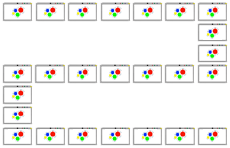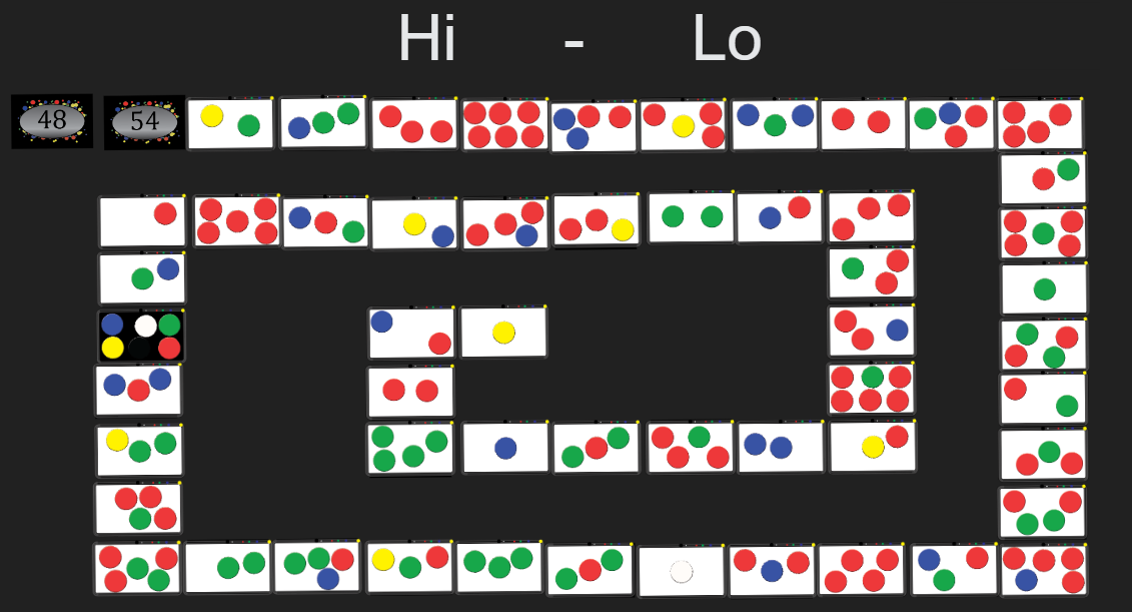Hi Lo
One of the primary functions of numbers is to compare the size or amount of different things. We really need to know if for example, one tree has more apples (or aphids) than another tree. This gets much more sophisticated of course but this is the foundation. Can you see the clues in Prime Colours that allow you to tell if one number is higher than another?
Quick Start
What you need to play
- 1 pack of cards
- A Hi Lo coin/card (optional. Used to show if you think the next card is higher or lower)
Set Up

Set up
Choose the cards that you want to use for the game. It's best to start with just the cards that have just 1 disk for the first game (only 5 of them but a good way to get a sense of the game and the most important cards.How to Play

How to Play
choose the cards you are going to play with. Lay them out in a line. The line can become a loop or s or any other shape.
The player turns over the first card in the line. This is her current card:
- She has to decide if the next card is a higher or lower number than the current card and say either "hi" or "lo"
-
Once she's decided, she can turn over the next card to check
- If she was right, she can continue to the next card
- If she is not right, she can take all of the cards that she got upto that point, shuffle them and put them at the end of the line. She can then paly again or let the next player have a go
What maths are we practising?
We are looking at rules for comparing colours. The first rules to do with which colour has a higher value. There's a visual clue on the border that shows you what the order of size of the colours is. When you combine colours, you can start to look for only the disks which are different to see if you can use that to tell which one is higher. Here are a few examples of the way that we can make judgements about comparitive size:
- One card might be the same as another card but have an extra disk (or 2...)
-
Two cards might have the same number of disks which are mostly the same but one is different (e.g. 2 reds and a green versus 2 reds and a blue)
- In general, ignore any disk combinations that both cards have and only compare the differences. Say both cards have 2 reds and a green but one has a blue and the other has a couple more reds, just decide what is bigger between 2 reds and a blue
- There will also be a few that have differences like one card with 2 greens and the other with a red and a blue. In this case, a green is higher than a red and a blue is higher than a green so it's hard to decide. In this case, you need to learn which is bigger out of the two cards
When you are just starting, you can use this activity to help children build up an instinct for which colours and combinations are bigger numbers. This is also a good way to assess how well children are able to reason with Prime Colours and how confident they are becoming recalling the numbers from the code.
